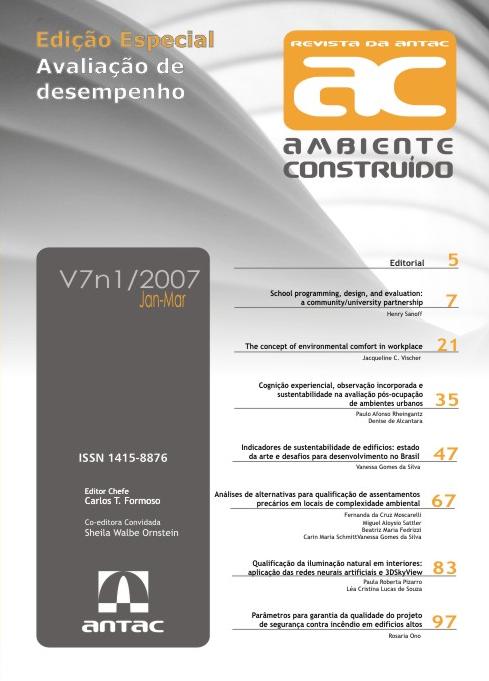Programa de necessidades, projeto e avaliação de escolas: uma parceria comunidade-universidade
Palabras clave:
Escolas, Programa de necessidades, Avaliação pós-ocupaçãoResumen
For decades, educational leaders discussed the components of a successful educational program, yet they have regarded the physical setting as an institutional backdrop receiving scant attention. Widespread misconceptions reinforce the view that the quality of school building has no impact on academic performance. Consequently, a gap exists between the educators' view of improving quality and the process of planning schools. School buildings ought to be an expression of the fact that exploration and discovery are important parts of obtaining knowledge. Current learning styles and teaching methods suggest the need for a new form of learning environment characterized by different activity settings and small-group activities. This middle school reflects recent efforts to promote small schools. It is the result of a lengthy collaborative process between the county public school system and a university to develop a 600-student school that includes three academic houses, each of which functions independently but under the same principal. Although school construction was completed in 2000, this case study focuses on the stages prior to design development and after building construction. A key factor in this study is the creation of a building program that responds to a curriculum featuring integrative, active, real world learning that involves significant contact with adults. Another important factor in the development of this case study is the assessment of the completed building from the students’ and teachers’ viewpoint after one year of occupancy.Descargas
Descargas
Publicado
Cómo citar
Número
Sección
Licencia
Aviso de derechos de autor/a
Derechos autorales
Los autores que publican en Ambiente Construído aceptan los términos:
- Los autores otorgan a la Revista el derecho de publicar bajo la Licencia de Atribución Creative Commons (CC BY 4.0), permitiendo el acceso, impresión, lectura, distribución, adaptación y desarrollo de otras investigaciones, si se reconoce la autoría.
- Se autoriza a los autores a distribuir el trabajo publicado en la Revista, como repositorios institucionales, o a incluir su artículo como parte de la tesis y/o disertación, siempre y cuando mencionen la referencia de publicación en Ambiente Construído.
- Cualquier persona puede leer, distribuir, imprimir, descargar e indicar la dirección del artículo completo sin autorización previa de la Revista respetando la licencia CC BY 4.0.
Creative Commons Attribution License
ISSN 1678-8621




